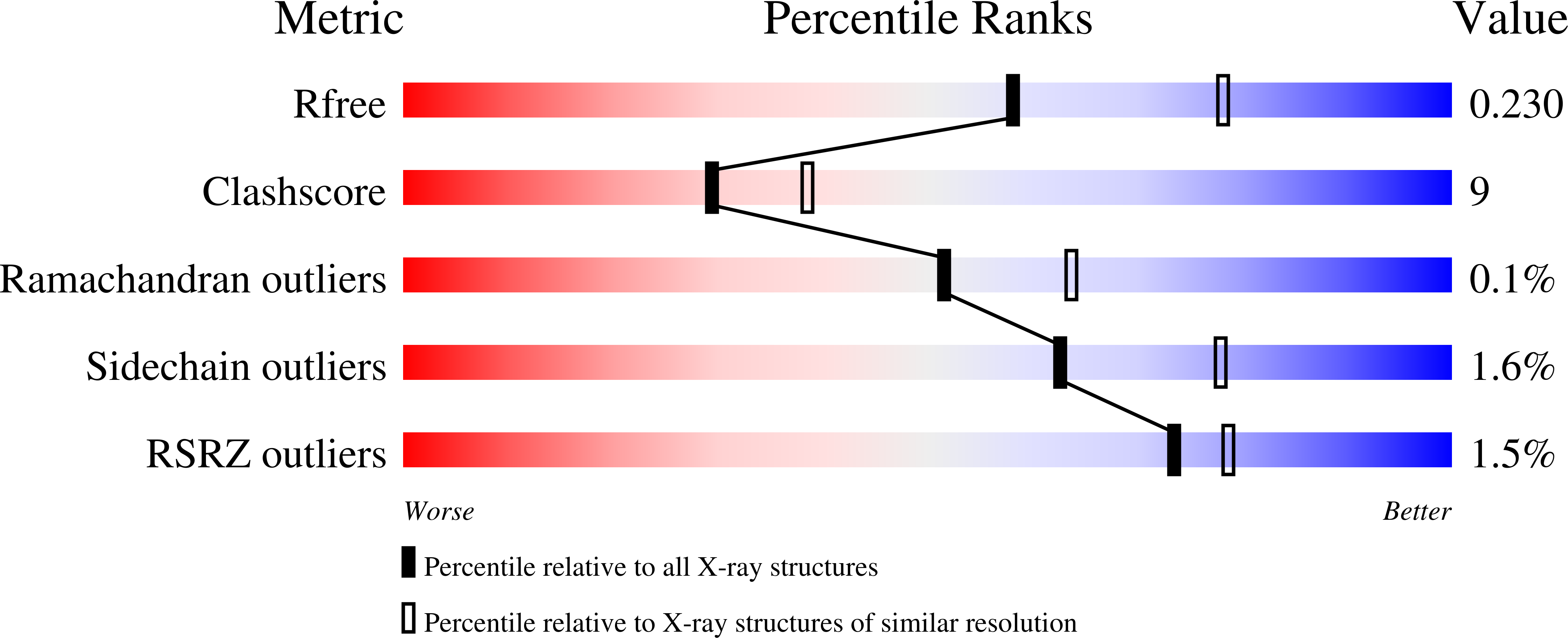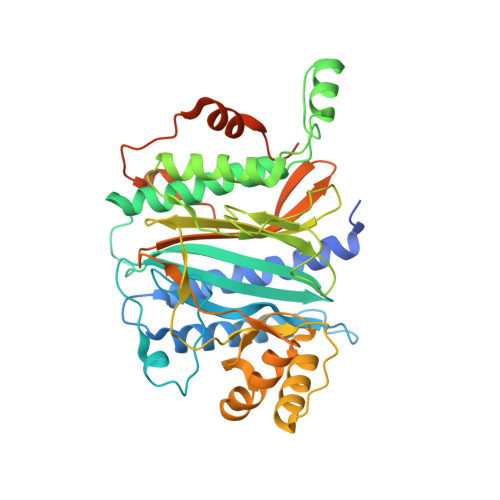Consistent mutational paths predict eukaryotic thermostability.
van Noort, V., Bradatsch, B., Arumugam, M., Amlacher, S., Bange, G., Creevey, C., Falk, S., Mende, D.R., Sinning, I., Hurt, E., Bork, P.(2013) BMC Evol Biol 13: 7-7
- PubMed: 23305080
- DOI: https://doi.org/10.1186/1471-2148-13-7
- Primary Citation of Related Structures:
4IPA - PubMed Abstract:
Proteomes of thermophilic prokaryotes have been instrumental in structural biology and successfully exploited in biotechnology, however many proteins required for eukaryotic cell function are absent from bacteria or archaea. With Chaetomium thermophilum, Thielavia terrestris and Thielavia heterothallica three genome sequences of thermophilic eukaryotes have been published. Studying the genomes and proteomes of these thermophilic fungi, we found common strategies of thermal adaptation across the different kingdoms of Life, including amino acid biases and a reduced genome size. A phylogenetics-guided comparison of thermophilic proteomes with those of other, mesophilic Sordariomycetes revealed consistent amino acid substitutions associated to thermophily that were also present in an independent lineage of thermophilic fungi. The most consistent pattern is the substitution of lysine by arginine, which we could find in almost all lineages but has not been extensively used in protein stability engineering. By exploiting mutational paths towards the thermophiles, we could predict particular amino acid residues in individual proteins that contribute to thermostability and validated some of them experimentally. By determining the three-dimensional structure of an exemplar protein from C. thermophilum (Arx1), we could also characterise the molecular consequences of some of these mutations. The comparative analysis of these three genomes not only enhances our understanding of the evolution of thermophily, but also provides new ways to engineer protein stability.
Organizational Affiliation:
European Molecular Biology Laboratory, Meyerhofstrasse 1, Heidelberg 69117, Germany.















